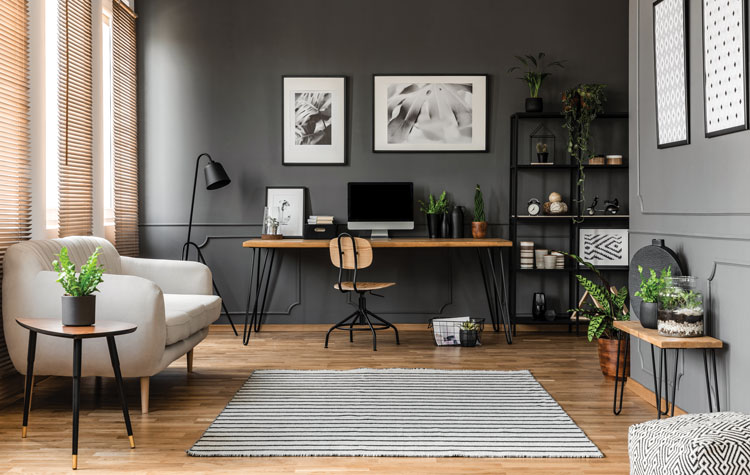Working remotely for the first time? Here are lessons from a lawyer who's done it for 13 years

Shutterstock
The pandemic has done what I never thought possible, validating what I have known for some time: When one works from home, one is actually working. Despite the industry’s negative projections during the early stages of COVID-19, our firm had a profitable year with all of us working from home.
I began working “remotely” in 2008, well before COVID-19 sent the rest of America home. I was an in-house attorney, traveling the world, with four little kids, one with special needs, when one day my daughter’s therapist told me straight out that my daughter needed me home more. Staying in my job and being home for my daughter was not possible. So I decided to take 12-18 months “off” and focus on my family. We moved to Costa Rica to get away from it all. But as former clients called with work opportunities, I soon found a path I normally would have considered too risky, one where I could still practice and do it from home. What was to be a 12-to-18-month hiatus turned into remote working for nearly 13 years, because even when I returned to a firm, I continued working remotely.
There are challenges and rewards for working remotely.
As everyone has learned, it is not easy working at home. When I started, people were not amenable to a crying child or the dog barking (or in some cases, my family chasing the cows out of our yard) during conference calls. But the benefits of being there for my daughter when she needed a hug or going for a midday run with my sons outweighed the isolation. Of course, the primary detriment is that when you can work from anywhere, the result often is that you never stop working.
At this point in the pandemic, many have figured out tricks to make working from home work, at least temporarily. But even after 13 years, COVID-19 threw a wrench into my routine by bringing schooling home.

Tracey Mihelic: “Everyone working from home needs his or her own space that is preferably not the kitchen table.” Photo by Got Headshots
I am not superhuman—I cannot watch the kids and/or my parents and draft a shareholder agreement at the same time. Working from home does not mean you suddenly have time for all of these consuming tasks. I could never have succeeded in this alone. I am fortunate that my husband has carried the burden of home care. He shops, cooks, shuttles the kids and the parents, and he is there when we all get sick. What I’ve learned is that you will not survive without help, whether it is your partner, family member, friend, sitter or a combination. Between clients’ demands and long hours, it is not realistic to work from home with kids (or parents) alone. You need someone you can count on to manage the household while you work, or it becomes an impossible situation.
A second critical element to my survival is a schedule. We all set schedules. But like New Year’s resolutions, most fall apart within weeks. Yet structure remains key. I schedule my work events, my kids’ events, my events—running, breakfast, lunch, meeting up with friends. I cannot count how many days I have asked myself, “Have I eaten today?” I schedule when I start work and when I stop; otherwise, I may never stop. It is midnight right now. Also, do not forget to sleep. My impossible goal is seven hours every night.
There are keys to building a remote worklife that works.
Everyone working from home needs his or her own space that is preferably not the kitchen table. I have my office with monitors, a work phone and the curtain my daughter painted that serves as my door. When the curtain is closed, everyone knows I am working. But since my daughter’s school went online, she has taken over my office and closes the curtain when she is “in school.” My husband and I work from the kitchen table.
Bad internet, poor connectivity to the office and low ink supply levels are the banes of my existence. I have installed every tool to bump up internet service, but that spinner still appears. My yard is being dug up to install Google fiber. Maybe that will save me—along with buying at least five ink cartridges at a time.
Working virtually, I discovered I have to respond faster than when I am in the office; otherwise, “they” wonder where I am. But this is changing as more people work from home. Previously, if I was not in the office, I was invisible to the team. So I spend extra time on phone calls and now in Zoom meetings.
But I have more self-determination working remotely. I stop working when I choose. I run with my sons. Ski if we are lucky. Pick up the kids from school. Take them for a slushie. When I am sick, I try not to work. I try to remember why I decided to work from home.
I do not want to minimize the devastation that COVID-19 has caused or the particular impact the pandemic has had on women having to leave the workforce. The world will never be the same. None of us will be. But one positive outcome of the past 15 months is that the universal perception in corporate America that when one is working from home, one is not working hard has been shattered. The extra time I had with my kids and the days I was able to spend with my mom before she died were worth more than any title or additional cash. I left corporate America to have a balanced life. I believe going forward, we won’t have to make that choice.
This story was originally published in the June/July 2021 issue of the ABA Journal under the headline: “Working Remotely? A View From a Vet”
Tracey Mihelic is senior counsel at Husch Blackwell in Salt Lake City, Utah. She is a University of Notre Dame Law School alumnus who is passionate about creating a sustainable world and counsels globally on renewable energy, with a focus on solar and wind projects.



